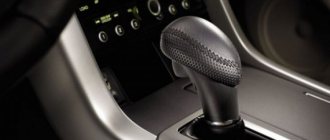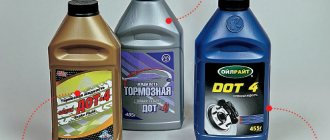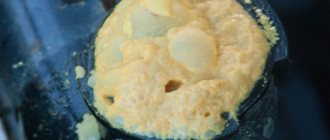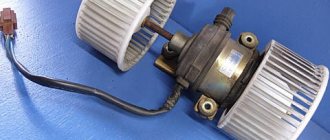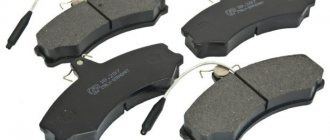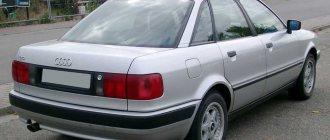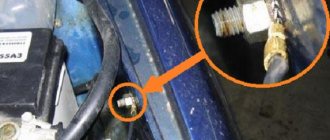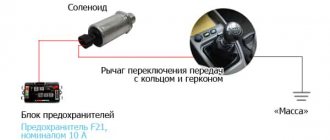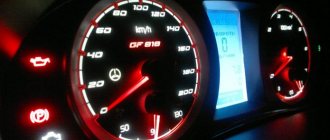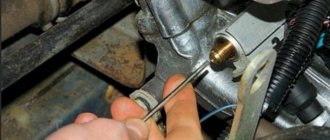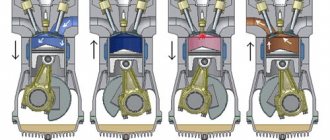How to check the fuel fluid level?
By looking under the hood, where a special tank is located, you can check the level. The tank is made of translucent plastic, so it is easy to determine by the minimum and maximum value marks whether the brake fluid has left or remains in the original amount. In case of topping up, it is better to familiarize yourself with the car's instructions in detail: in some brands that have ABS, bleeding of the brakes is required.
If you do lose brake fluid, you should first understand the reasons. Under no circumstances should you continue driving.
The tank is cracked - what to do first?
Some motorists mistakenly begin to dismantle the entire brake assembly. Calmness and a visual inspection are the first step towards a successful repair. Wet marks and smudges indicate a decrease in the level of the substance. If a crack is detected, experienced car owners advise replacing the tank immediately - sealing it will not help. What to do if an incident happens on the route?
First aid when a crack is detected
The reasons why brake fluid leaves the reservoir can be different. This may occur as a result of the machine hitting an obstacle. The car service is far away - what should I do? Repairing a crack in the path is only possible to continue moving. Upon arrival at your destination, you will have to purchase a new tank. Glue doesn't help in most cases. Craftsmen recommend using a regular 40-watt soldering iron, slightly extending the rod and slightly loosening the top screw. A piece of plastic tape similar to the body of the tank is cut off. It is unsoldered and used as a patch. First you need to go over the crack with a soldering iron, then use a strip of prepared plastic.
Replacing the tank on a VAZ-2109
The algorithm for replacing the tank is simple. The car must be washed outside and in the engine compartment. This should be done manually, avoiding moisture getting on the pads, starter, and sensors.
Then you need to jack up the car and clean the threaded connections that you will have to deal with. By visual inspection, you can recognize where the brake fluid goes. The reasons for this trouble will also in most cases become clear.
By unscrewing the nuts and disconnecting the cover wires, a person gains access to the tank, which must be removed.
Important advice from experienced car owners! To loosen hose clamps, it is better to unscrew the bolts using pliers.
Clutch hose repair method
Experts say one of the common reasons why clutch brake fluid has leaked is a damaged hose through which fluid circulates from the reservoir to the clutch.
Effective replacement tips:
- You need to remove the tank itself by removing the clamp from below.
- You should purchase a new hose, preferably red.
- You need to pull out the damaged hose carefully so as not to accidentally break off the plastic fitting.
It is important not to allow fluid to leak onto the fender or paint. After removing the tank, you should rinse it with water; it is also recommended to replace the clamps. We install the hose and tighten it without much effort. Don't forget to tighten the nuts as well.
Experts say that the hose often wears out. It must be checked periodically and, if damage is detected, replaced with a new one.
Presence of flakes in TJ
The presence of flakes and other impurities in the brake fluid can be eliminated by replacing it. For these purposes, you will need the tools from the table below.
Table - List of tools for replacing TJ
| Name | Note |
| Syringe | Can be replaced with a rubber bulb |
| Tara | Volume up to 2 liters |
| Hose | Transparent. Length is about a meter. Diameter depends on the fitting |
| tube | For putting on the syringe nozzle |
| Key | Size depends on fitting |
Replacing brake fluid must be accompanied by bleeding the circuits. Partial draining of fuel fluid only from the tank is unacceptable. If flakes are present, the entire brake fluid should be changed.
Brake cylinder leak
A common cause of brake fluid loss is a leaking cylinder. The occurrence of a problem is judged by the stain left under the vehicle. Finding out the reason is easy.
- You will have to remove the wheel and carefully inspect the brake disc.
- The calipers should be checked for leaks.
If you have a brake drum system, there is an urgent need to remove the drums. The problem involves wear of the rubber seals. Especially often, such troubles await residents of regions with severe frosts.
Checking the wheel cylinder
Some cars use brake discs on the front and rear wheels. Other models have brake drums on the rear wheels, which use the wheel cylinders to activate the brake pads when the brake pedal is pressed.
On brake drums, you will need to remove the wheel and wheel assembly as well as the brake drum to access the wheel cylinder assembly.
- Check the repair manual for your specific make and model of vehicle if you are unsure how to remove the drum. If you don't have a manual, buy an aftermarket manual. They cost a few dollars and you can find them at most auto parts stores and online.
- Once you remove the drum, you will find the wheel cylinder assembly at the top of the drum brake. Look for signs of wet spots around the assembly and cylinder.
- Just like calipers, pistons and other internal components in wheel cylinders can develop internal leaks due to wear or damage. Gently pull out the rubber boots on each side of the wheel cylinder to check for leaks.
- If you find any signs of leakage, repair or replace the wheel cylinder.
About the consequences
There can be many answers to the question of where the brake fluid goes from the reservoir. It can go into the vacuum muffler. This indicates a high percentage of wear on the master cylinder piston cuff. For simple rubber there is nothing terrible about this. Another issue is the accumulation of the product in the form of a dangling layer. This will result in an increase in resistance at high diaphragm speeds. There is an opinion that such a situation simply kills the diaphragm. By changing the cuff, movement will become safe. Sometimes you have to install a repair kit while disassembling the vacuum unit.
Some motorists ask whether brake fluid can leak into the engine. Experts give a negative answer. She can only get there if she confuses the canisters with liquid.
How to determine the location of the leak?
First of all, you need to become familiar with some of the signs that indicate a faulty brake system. Firstly, this is an increase in pedal free play, and secondly, a decrease in braking efficiency. All of this may indicate a leak in the brake system. Therefore, if this happens, be sure to check the brake fluid level; most likely, it has been low.
Attention!
A drop in brake fluid level in cold weather in no way indicates compression of the fluid at low temperatures! The fact is that many drivers mistakenly consider a decrease in brake fluid level in the cold to be a completely normal sign. However, it is not.
You need to start checking from the reservoir, then move on to the main brake cylinder, and only then inspect the circuits and working parts of the brake system. Leak locations can always be “marked” by the most common traces of brake fluid, which are difficult to evaporate and are very easily noticeable even by an inexperienced driver.
The weakest points of any braking system are considered to be the joints of the brake circuits or the seals of the braking organs. Therefore, you need to pay attention to them first.
Symptoms of defects in the master brake cylinder
Rubber seals on the brake master cylinder cause leaks. They cause penetration of the vacuum booster. In such a situation, replacing the cylinder will help. If a malfunction occurs with the cylinder, the brakes fail completely or do not work correctly. The main challenge for this part is the aging of the brake pads. Diagnostics involves an initial warning to the driver using indicators on the dashboard and checking the pressure in the system. What does the motorist see as a result of the problems that have arisen?
- Pressing the pedal, the owner of the steel horse feels its slow stop. The point here is the loss of tightness of the pistons or wear of the cuffs.
- A short pedal stroke means a high concentration of brake fluid; it has nowhere to go due to a clogged hole or a swollen rubber seal.
- There is a failure of the pedal: the matter is in the liquid rushing into the expansion tank.
Airing the brake system
During vehicle operation, air may appear in the circuit. The formation of plugs is usually associated with wear of the pair: brake cylinder - piston or a decrease in the fluid level in the tank below critical. As a result of air entering the vacuum booster and hoses, braking intensity decreases due to a deterioration in the transmission of force to the pads.
To solve the problem of brake fluid airing, the system should be bled. If necessary, you need to top up the brake fluid to the nominal level. If fuel fluid flows through the “cylinder-piston” pair and the circuit is filled with air, then the brake mechanism must be overhauled and repaired.
Secrets of bleeding brakes
To complete the repair process, the brake system needs to be bled. You can do the work yourself or contact the service.
- Fill the reservoir with brake fluid up to the max mark.
- The wheel brake fittings need cleaning.
- Take a separate container and a hose attached to the fitting.
The assistant sitting behind the wheel must press the gas pedal evenly and firmly three times. When pressing the fourth time, the pedal does not need to be released. At this time, you need to unscrew the fitting and look at the outlet of the fuel injection fluid. Bubbles in the stream will indicate air in the system. After the air is released, the fitting is wrapped, and the process is repeated on another set of wheels. Observing all pumping rules, it is impossible to be completely sure of the reliability of the result. Experienced car enthusiasts recommend not to neglect the services of service stations.
When making repairs yourself, experts advise tilting the car slightly towards the wheel in question. The air will rise upward and reach the threaded valve sooner. Lightly tapping the caliper optimizes the process. In addition to the above-mentioned bleeding technique, there is a technique for adding brake fluid to the supply reservoir. This is difficult to do and only experienced vehicle owners can do it. This procedure is not feasible for machines with return pressure control valves.
If handled incorrectly, there is a high risk of causing new breakdowns and having the opposite effect - the appearance of air in the brake system in even larger quantities. Professionals will come to the rescue; they will complete the work competently within the optimal time frame.
Sources of brake fluid leaks
Brake fluid may leak from one (or several) elements of the brake system. May leak:
- brake hose;
- brake pipe;
- tank;
- cylinders;
- places of fastening and connection of the components of the assembly.
Crack in the tank
The fluid level may drop due to mechanical damage to the reservoir. This malfunction is easily identified by a simple inspection: oil leaks are visible. The tank will have to be replaced with a new one, do not be greedy and do not try to solder it.
Depressurization of the brake line
One of the most dangerous breakdowns. It manifests itself simply: when pressed, the pedal goes to the floor almost without resistance, and the car does not noticeably slow down. If this happens to your car, stop immediately. Use the handbrake or use the engine brake. You cannot drive with such a malfunction; you risk your life.
Damage to the brake hose
Hoses are made of rubber, so sooner or later they will crack. This can be determined by carefully feeling the hose. It must be dry (without leaks of fuel fluid), without damage or tears, and be easy to bend. If something is wrong, the hose is changed.
The hose may fly off the fitting - this is another reason for brake failure. To repair, either put it in place, tightening the clamp tightly, or replace it with a hose of smaller diameter.
Clogged hoses and pipelines
Using low-quality brake fluid, neglecting daily car care and violating maintenance schedules can lead to blockages in the main pipeline. Eliminating this malfunction will take a lot of effort and time, so don’t skimp on the TZ and don’t forget about prevention.
Loosening the fastening
All transitions and seals between components in the braking system must be as tight as possible, otherwise leakage of fuel fluid and air leaks cannot be avoided.
The main brake cylinder is faulty
Most often, seals fail. It's easy to change them even yourself. A malfunction will be indicated by leaks of technical fluid.
Violation of the integrity of the brake cylinder
The absence of traces of fuel fluid on the master cylinder does not necessarily indicate its serviceability. The fluid does not always flow outward; it can go inward, into the brake booster. It is more difficult to identify this failure; you will have to remove the cylinder. In this case, the unit must be replaced, we are not talking about repairs.
The wheel brake cylinder is faulty
If you see traces of fuel oil on the asphalt near one of the wheels, most likely the reason is the wear of the wheel cylinder seal. To replace a defective seal, you will have to jack up the car, remove the wheel and caliper, and only then begin repairs. If you do not consider yourself a car repair specialist, it is better to turn to professional car mechanics.
